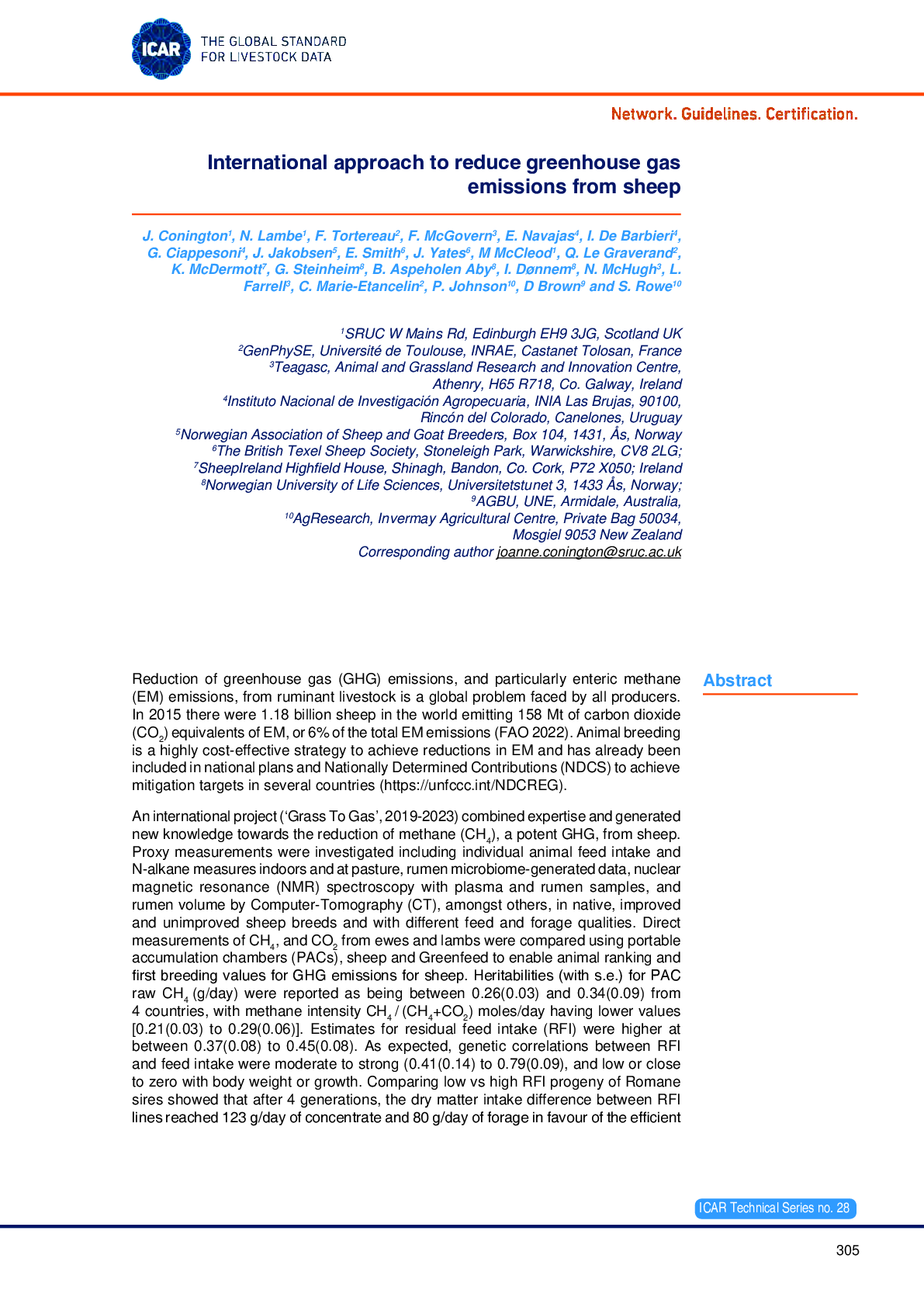ABSTRACT.- Reduction of greenhouse gas (GHG) emissions, and particularly enteric methane (EM) emissions, from ruminant livestock is a global problem faced by all producers. Although large ruminants make up the majority of the enteric methane emissions from livestock, in 2015 there were 1.18 billion sheep in the world emitting 158 Mt of carbon dioxide (CO2) equivalents of EM, or 6% of the total EM emissions (FAO 2022). Animal breeding is a highly cost-effective strategy to achieve reductions in EM and has already been included in national plans and Nationally Determined Contributions (NDCS) to achieve mitigation targets in several countries (https://unfccc.int/NDCREG). Animal breeding is a long-term strategy to make cumulative reductions in methane and GHG emissions, which are permanent and highly cost-effective, for meat (Lambe, 2022), wool (Navajas et al., 2022a) and potentially for dairy sheep.

